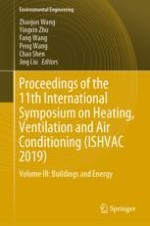2020 | OriginalPaper | Chapter
The Feasibility Study of Net Zero Energy Building for Future Energy Development
Authors : Yutong Li, Bin Hao, Qing Ye
Published in: Proceedings of the 11th International Symposium on Heating, Ventilation and Air Conditioning (ISHVAC 2019)
Publisher: Springer Singapore
Activate our intelligent search to find suitable subject content or patents.
Select sections of text to find matching patents with Artificial Intelligence. powered by
Select sections of text to find additional relevant content using AI-assisted search. powered by
